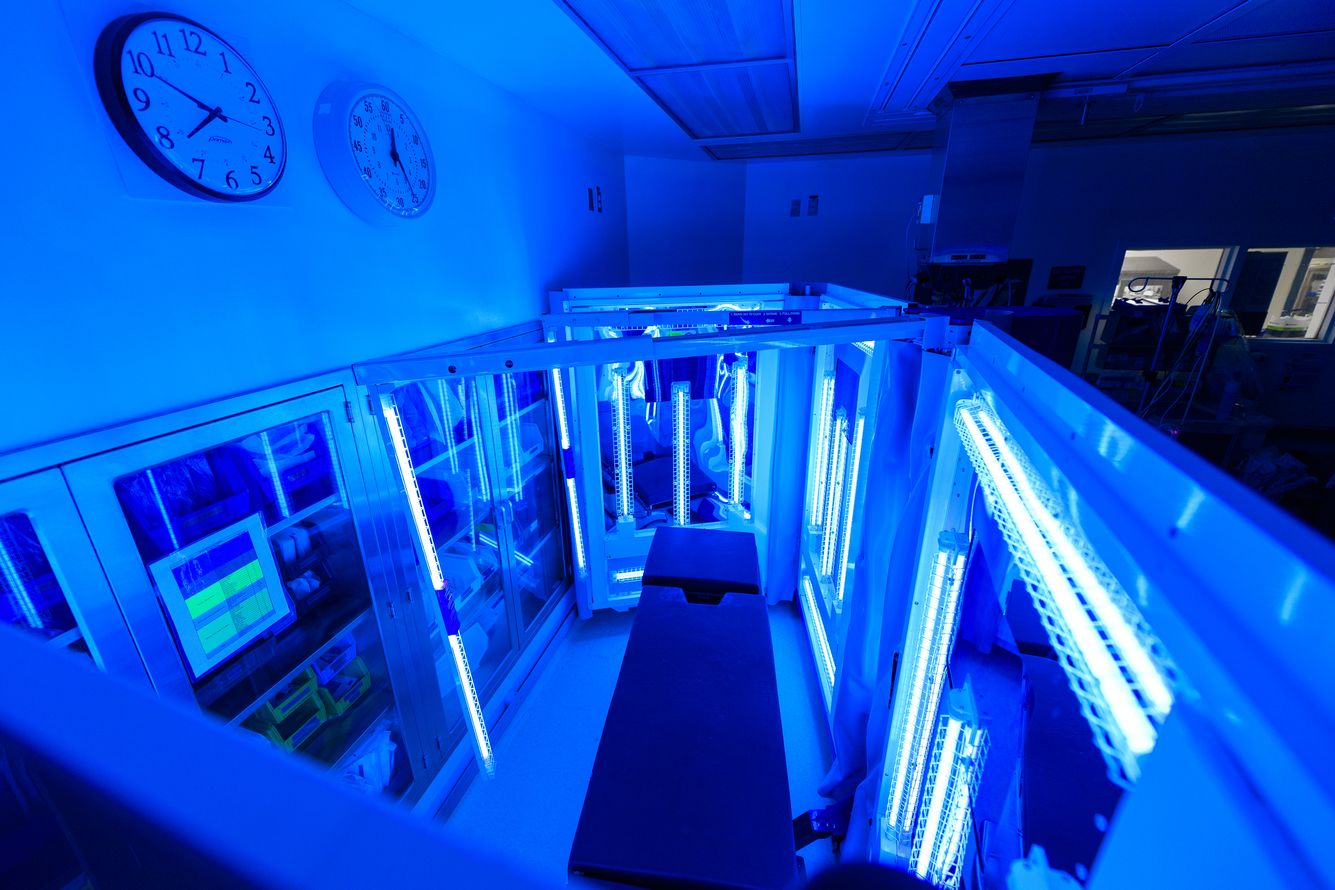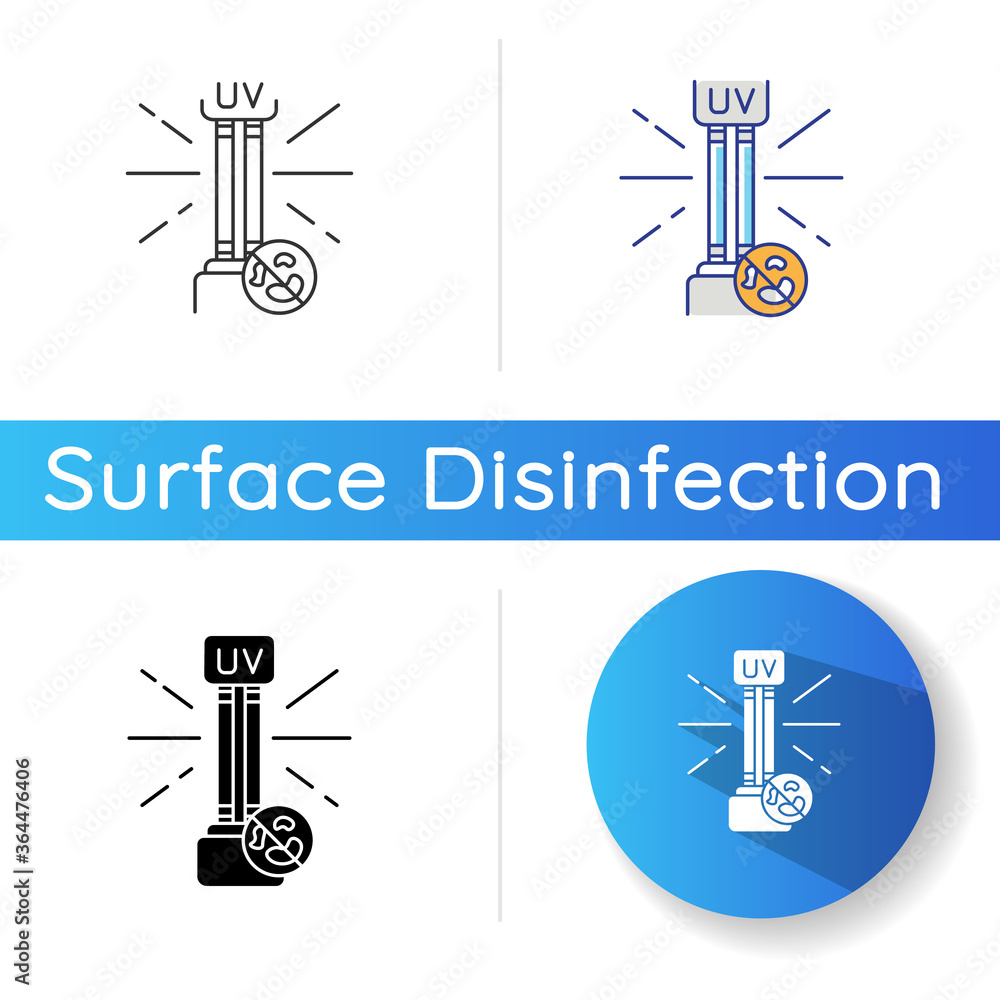Far-UVC UV Sanitizers: An Aggressive Method to Keeping Tidiness and Safety
Far-UVC UV Sanitizers: An Aggressive Method to Keeping Tidiness and Safety
Blog Article
Discovering the Advantages of Far UVC Light: Changing Indoor Air Quality
One such solution that has actually obtained attention is Far UVC light. How specifically does Far UVC light work? In this discussion, we will explore the interesting globe of Far UVC light and uncover its possibility in changing the means we safeguard our interior environments.
Exactly How Much UVC Light Functions
Much UVC easy work by producing short-wavelength ultraviolet light that has the capability to penetrate and suspend bacteria. Unlike conventional UV light, which can be damaging to human skin and eyes, far UVC light has a shorter wavelength that is absorbed by the external layers of human skin, stopping it from getting to the underlying living cells. This makes it a efficient and secure option for constant disinfection in busy areas.
When far UVC light is discharged, it interacts with the DNA and RNA of bacteria, consisting of microorganisms and viruses, disrupting their capability to replicate and triggering them to end up being non-active. The high power of the short-wavelength light damages the molecular framework of the hereditary material, avoiding the microorganisms from reproducing and spreading.

In addition, far UVC light can be quickly incorporated right into existing illumination fixtures, making it an economical solution for a vast array of applications, consisting of healthcare facilities, colleges, offices, and public transport. Its capacity to continually decontaminate occupied areas without positioning a danger to human wellness makes much UVC light a promising modern technology in the area of indoor air high quality administration.
Far UVC Light's Effect on Airborne Pathogens
The effect of far UVC light on air-borne pathogens is significant in minimizing the transmission of transmittable diseases and improving interior air top quality. Far UVC light refers to a certain variety of ultraviolet light that has a wavelength between 207 and 222 nanometers. Unlike standard UVC light, which is dangerous to human skin and eyes, much UVC light has been discovered to be risk-free for people while still being efficient versus virus.
Researches have actually shown that much UVC light has the capability to inactivate a variety of airborne viruses, including the flu infection and the coronavirus (far-uvc). These pathogens are transmitted via respiratory system beads, and by using much UVC light, it is feasible to reduce their feasibility and stop their spread
Among the key advantages of using much UVC light is its capacity to get to all areas of a room. Unlike various other sanitation approaches that might have restricted reach, much UVC light can be set up in overhanging lights fixtures, making sure that the entire room is dealt with. This makes it specifically reliable in crowded locations such as health centers, colleges, and public transport.
In addition, far UVC light can be made use of continually without posturing a danger to human health. It can be applied as part of an extensive approach to boost interior air quality by reducing the focus of airborne microorganisms. By incorporating much UVC light into existing air flow systems, it is possible to produce safer and healthier indoor atmospheres.
Health And Wellness Advantages of Far UVC Light
Using far UVC light offers countless health and wellness advantages, making it a beneficial tool in promoting public health and wellness and safety. Much UVC light has been found to efficiently kill airborne microorganisms, such as viruses and bacteria, without harming human skin check these guys out or eyes. This makes it an optimal solution for decontaminating indoor environments and minimizing the danger of infections.
Among the vital health benefits of far UVC light is its capability to combat the spread of airborne illness. Studies have actually revealed that much UVC light can efficiently suspend infections like flu and consumption. By installing far UVC lights in public areas, such as institutions, hospitals, and offices, the transmission of these diseases can be considerably decreased.
Furthermore, far UVC light has actually been located to be secure for continual direct exposure, as it does not create skin damages or increase the risk of skin cancer. This is due to the reality that much UVC light has a restricted series of penetration in human skin, stopping any kind of damage to deeper layers.
Along with its straight influence on air-borne microorganisms, far UVC light can also have indirect wellness benefits. By minimizing the presence of hazardous microorganisms airborne, it can boost indoor air top quality, bring about a reduction in breathing symptoms and allergies.
Far UVC Light's Role in Lowering Allergens
Far UVC light, with its wavelength in the series of 207 to 222 nanometers, has been verified to be effective in inactivating viruses, microorganisms, and fungi. Current studies have additionally shown that it can effectively decrease the presence of irritants in interior spaces. When much UVC light is released, it connects with the DNA and RNA of bacteria, damaging their genetic product and stopping their duplication.
Far UVC Light's Prospective in Public Spaces
With its tested efficiency in minimizing irritants and suspending microbes, much UVC light holds great potential for application in public rooms. Public spaces, such as medical facilities, airport terminals, offices, and schools, are frequently crowded and vulnerable to the spread of airborne conditions. Incorporating much UVC light innovation in these areas can significantly boost indoor air quality and reduce the transmission of damaging pathogens.
One promising application of much UVC light in public areas is in ventilation systems - far-uvc. By mounting far UVC lamps in cooling and heating systems, the modern technology can sanitize the air as it circulates, effectively minimizing the concentration of air-borne viruses and bacteria. This strategy can assist avoid the spread of conditions such as consumption, covid-19, and influenza, advertising a much healthier and safer setting for passengers
Furthermore, far UVC light can be used in the sanitation of often touched surfaces. High-touch locations in public spaces, such as doorknobs, hand rails, and lift buttons, can nurture a wide range of virus. By strategically positioning far UVC light sources in company website these areas, the modern technology can constantly sanitize surface areas, decreasing the threat of contamination and transmission.
In addition, making use of much UVC light in public rooms is safe for human direct exposure. Unlike conventional UVC light, which can be damaging to human skin and eyes, much UVC light has actually been proven to be safe and secure for continuous procedure in occupied areas. This makes it an excellent solution for enhancing indoor air high quality without posing any kind of health threats to individuals.
Verdict

Much UVC light works by emitting short-wavelength ultraviolet light that has the ability to permeate and suspend microbes. Unlike traditional UV light, which can be damaging to human skin and eyes, much UVC light has a much shorter wavelength that is soaked up by the external layers of human skin, stopping it from reaching the underlying living cells. Far UVC light refers to a specific array of ultraviolet light that has a wavelength in between 207 and 222 nanometers. Unlike conventional UVC light, which is harmful to human skin and eyes, far UVC light has actually been located to be risk-free for people while still being efficient against pathogens.
Unlike standard UVC light, which can be hazardous to human skin and eyes, much UVC light has been shown to be safe and risk-free for constant operation in occupied Recommended Site rooms.
Report this page